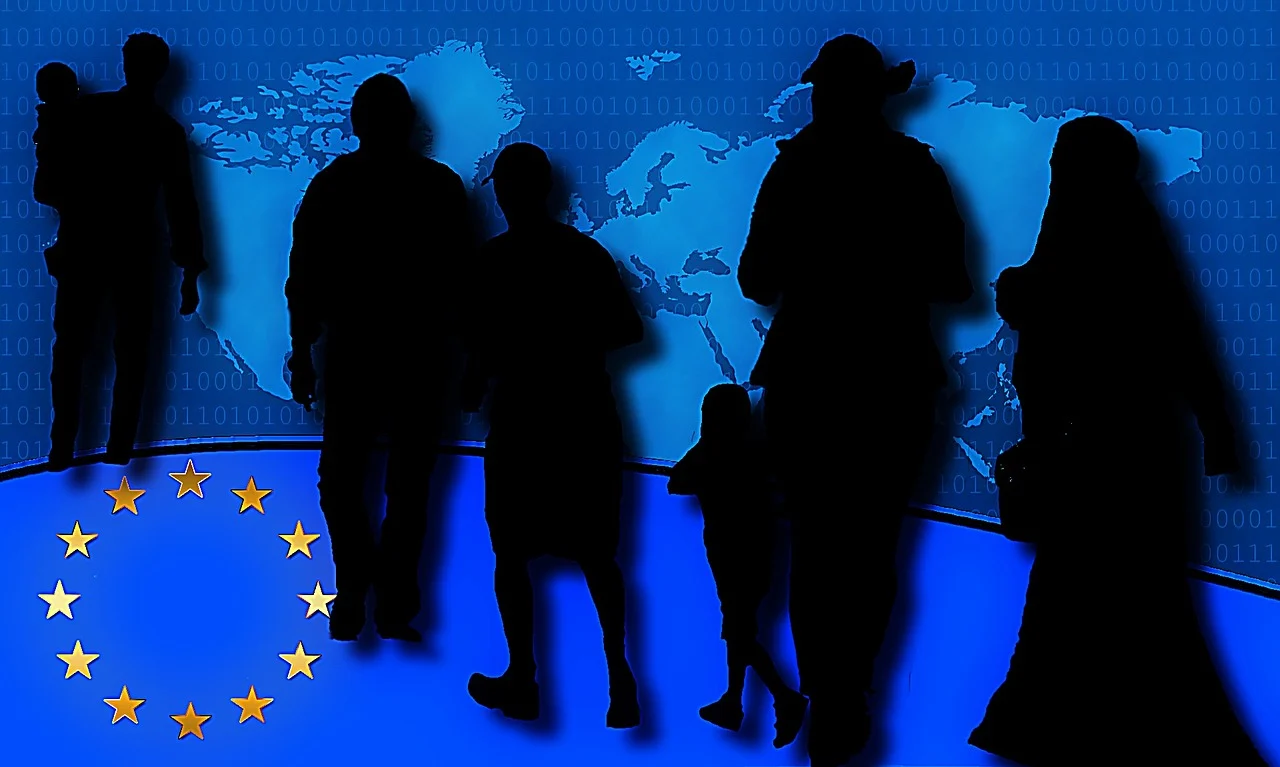November 2024 – In Italy, the migrant crisis is often framed as a major political issue and a source of social tension, yet the country’s demographic challenges suggest that migrants could actually play a vital role in revitalizing the economy and addressing the labour shortages that are crippling the nation. Italy’s population is aging rapidly, with a shrinking workforce and a growing number of vacant properties and derelict towns across the country. However, despite these challenges, Italian policymakers have struggled to devise a coherent plan to integrate migrants into the labor market and utilize their potential in a way that benefits both the economy and society as well as provide the needed respite and opportunity for the migrants in question.
While Italy faces deep demographic crises, including a declining birth rate and an aging population, migrants are often viewed through a political lens rather than as a potential solution to some of the country’s most pressing problems. This has created a paradox: Italy needs more people to fill vacant towns, renovate dilapidated buildings, and bolster its workforce, yet migration is still widely regarded as a problem by many political leaders and segments of society.
The Demographic and Economic Context
Italy, like many European nations, is experiencing severe demographic decline. According to Eurostat, Italy’s population is forecast to decline by 15% by 2050, with one of the lowest birth rates in the European Union. At the same time, the country is facing a massive aging crisis, with a growing number of elderly people and fewer young people entering the workforce. The Italian workforce shrank by more than 1 million people between 2012 and 2022, leaving businesses struggling to find enough workers in sectors ranging from construction to healthcare.
This shortage is especially evident in rural and southern parts of the country, where derelict towns and abandoned villages have become symbols of Italy’s demographic crisis. According to a 2024 report from the National Institute of Statistics (ISTAT), more than 6,000 towns in Italy have seen their populations decrease significantly over the past few decades. Many of these areas have empty houses and crumbling infrastructure, offering a unique opportunity for regeneration if the right incentives and manpower were provided.
Migrants, particularly those from countries in Africa, Asia, and the Middle East, could potentially help address this imbalance. Migrant workers often fill labor-intensive jobs in agriculture, construction, hospitality, and care work – sectors that many Italians have increasingly avoided. Research by the OECD suggests that migrants, particularly those from outside the EU, contribute significantly to the economy by working in sectors where there are chronic labor shortages, and their economic integration could be a key driver of growth.
Migrants and Economic Opportunity
The arrival of migrants could offer a solution to Italy’s labour market gaps. According to a 2023 report by The Italian Business Confederation (Confindustria), the country’s economy would benefit significantly from the integration of migrants into the workforce. Many areas that have seen depopulation could benefit from an influx of young migrants willing to work in sectors that support local economies. For example, agriculture, which has seen a steady decline in workers, could be revitalized by migrant labor, especially in regions like Sicily and Calabria, where vast agricultural lands remain untended due to labor shortages.
Additionally, migrants could help revitalize abandoned properties and small towns that have long been forgotten. There are already successful examples of migrant-led regeneration projects in southern Italy, where migrants have restored old buildings and revitalized the local economy by setting up small businesses or working in construction and tourism. The Municipality of L’Aquila, for instance, has welcomed migrants to assist with the post-earthquake reconstruction, utilizing their labor to rebuild homes and businesses.
The Politics of Migration in Italy
Despite the potential economic benefits, migration is still seen as a contentious issue in Italian politics. Right-wing political parties like the Lega and Fratelli d’Italia (Brothers of Italy) have framed migrants as a threat to national identity, security, and social cohesion. Prime Minister Giorgia Meloni and her government have repeatedly argued that Italy must first focus on controlling migration and preventing irregular arrivals, with a strong emphasis on securing borders and sending migrants back to their home countries.
Meloni’s government has pushed for tougher immigration controls, citing concerns about the integration of migrants and the rise of right-wing populism across Europe. In contrast, left-wing parties like the Democratic Party (PD) have advocated for more inclusive policies that emphasize the economic potential of migrants. However, even among centrist factions, there is a lack of consensus on how best to manage migration in a way that ensures both social and economic stability.
Many Italian politicians also focus on the perceived social costs of migration – such as the pressure on social services, housing, and public infrastructure – rather than recognizing the contribution migrants can make to the economy. Public opinion on migrants in Italy remains divided, with surveys often showing that while support for migrants in the workforce is high, concerns about integration, crime, and cultural differences are also widespread.
Why Isn’t Italy Using the Migrant Workforce?
Despite clear evidence that migrants could help meet Italy’s demographic and workforce challenges, the Italian government has struggled to devise a comprehensive plan to fully integrate them into the economy. There are several reasons for this:
- Political Polarization: Migration remains a deeply polarizing issue in Italy. Political leaders often use the issue as a tool to rally their base, with populist parties stoking fears about migrants in order to gain support. This often leads to policy paralysis and a reluctance to embrace solutions that could benefit the economy.
- Integration Challenges: Even when Italy has recognized the economic potential of migrants, integration into the workforce has been difficult. Many migrants face barriers to employment, including language and educational gaps, as well as discrimination in the labor market. This limits their ability to fully contribute to the economy.
- Lack of Incentives for Rural Regeneration: While some local governments have experimented with migrant-led regeneration projects, there is no national policy in place to incentivize the return of migrants to rural or depopulated areas. The country lacks a coherent strategy for redistributing migrants across regions to areas that could benefit from their labor.
- Public Opinion and Misinformation: Despite evidence to the contrary, there is a prevalent narrative in Italy that migrants represent a burden on public services. Misleading media portrayals of migration, combined with racist rhetoric, contribute to a hostile environment that undermines efforts to integrate migrants into the workforce.
The Way Forward: Leveraging Migration for Economic Growth
For Italy to address its demographic crisis and economic stagnation, it will need to adopt a more pragmatic approach to migration. This includes:
- Creating pathways to employment for migrants by investing in language training, recognition of foreign qualifications, and anti-discrimination measures in the labor market.
- Encouraging migrant settlement in rural and depopulated areas by offering financial incentives and integrating migrants into local economies through housing and job creation programs.
- Rethinking the political rhetoric around migration to recognize the economic and social value migrants can bring to Italy’s shrinking population and declining workforce.
Italy’s migrant crisis should not be seen solely as a challenge; it could also be an opportunity to address some of the country’s deep-seated demographic and economic problems. By embracing a more inclusive and strategic approach to migration, Italy could harness the potential of its migrant workforce to drive economic growth, revitalize abandoned towns, and fill critical labor gaps.
References:
- Eurostat, 2024. “Italy’s Demographic Challenges: Population Decline and Aging.” Eurostat
- ISTAT, 2024. “Italy’s Shrinking Workforce: A Crisis in Need of Solutions.” ISTAT
- OECD, 2023. “Migrants in the Labor Market: The Case of Italy.” OECD
- The Italian Business Confederation (Confindustria), 2024. “The Role of Migrants in Italy’s Economic Revival.” Confindustria Report



